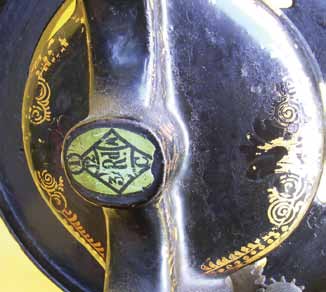The Challenge
another well known Birmingham marque

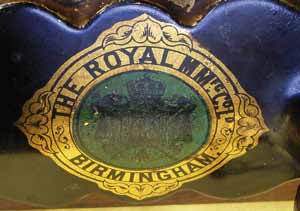
The Royal M. Mfg. Co. Ltd badge with Harris's trademark on the final version.
Along with the "Shakespear" (ISMACS News 104) and the "Agenoria" (ISMACS News 100) there was a third popular design made by the same group of companies. It was called "The Challenge" and the design was registered by Joseph Harris.
The machine was priced at 4 guineas (£4.20), the same as the "Shakespear" and the "Agenoria" and most similar machines!
Joseph Harris ran a Dyeing and Bleaching works in Birmingham and saw the sewing machine as part of an expansion of his fledgling business empire. He registered the design of "The Challenge" (No. 249472) on 12th January 1871. This gave him the rights to sewing machines made in that shape and with that name. He had no manufacturing capacity in his business and approached the Royal Sewing machine Company in Birmingham to make the machines. "The Challenge" came on the market in 1871 as a machine made by the Royal S. M. Co. exclusively for J. Harris. To make it, the Royal S. M. Co. utilised existing pieces of mechanism which they were using on their "Shakespear" machine: the shuttle drive and feed mechanism (Shakespear & Illston's patent), the bobbin winder geared to the lower pinion, the balance wheel, etc.
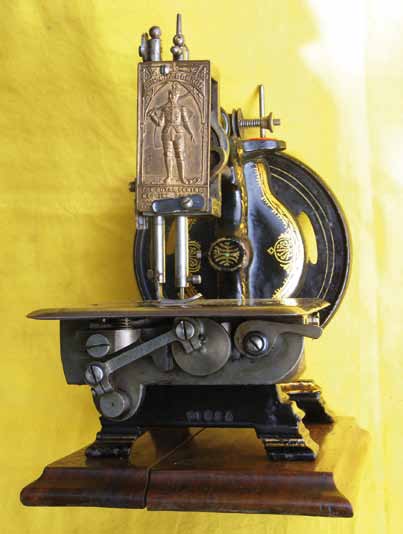
The first incarnation of "The Challenge" as made by the Royal S. M. Co. exclusively for J. Harris.>
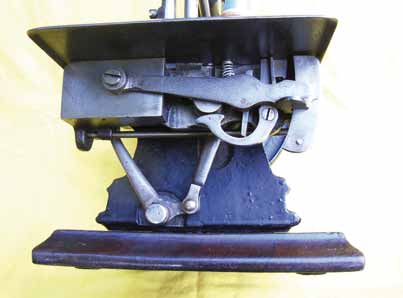
The Imperial "Challenge" with Harris & Judson's patent shuttle drive and feed mechanism
Sales must have been encouraging for Joseph as, at the end of 1873, he took over the Franklin Sewing Machine Company which had been making the "Agenoria" sewing machine. In partnership with a John Judson, the Company was renamed the Imperial Sewing Machine Company at the Franklin Works. Harris and Judson patented their own shuttle drive and feed mechanism on 23rd January 1874 (No. 304) and production was started of the Imperial "Challenge" and the Imperial "Agenoria" using their new patent with its calibrated stitch length lever. The machines, being 'registered designs', were the same shape as their predecessors though much of the mechanism was different. The Royal S. M. Co. ceased to supply "The Challenge" to Harris but, having all the parts, rebadged their version as the "Avon" machine in their own range.
Business did not go well for long, however, and the Imperial Company went into liquidation in 1877 when Harris took the remains and merged them with the Royal S. M. Co. which became a Limited Company at the same time, Joseph Harris becoming a Director. The Royal S. M. Co. Ltd. took up the manufacture of the Harris and Judson versions of "The Challenge" and the "Agenoria".
Competition in the sewing machine industry was cutthroat after 1880 and all the remaining small manufacturers diversified into bicycles and other machinery. The Royal S. M. Co. Ltd changed its name in 1882 to the Royal Machine Manufacturing Co. Ltd. to reflect this diversification, in which form it existed until going into voluntary liquidation in 1888. Joseph Harris left the company in 1882 but the Royal M. Mfg. Co. Ltd. continued to make his "Challenge" sewing machine expressly for his dealerships. This late version used Illston's patent friction driven bobbin winder (Patent No. 4137 of 12th October 1880).
Fitting the friction driven bobbin winder necessitated a larger balance wheel which incorporated a 'loose wheel' motion for winding bobbins.
Photos & text: Martin Gregory
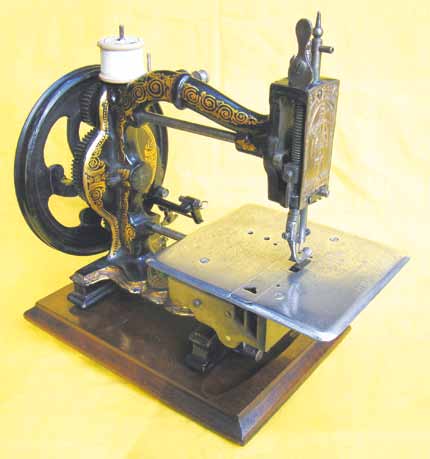
The last version of "The Challenge" made by the Royal M. Mfg. Co. Ltd. expressly for J. Harris & Sons.

The Imperial "Challenge" badge, showing Harris' trade mark imperial crest in green in the centre.
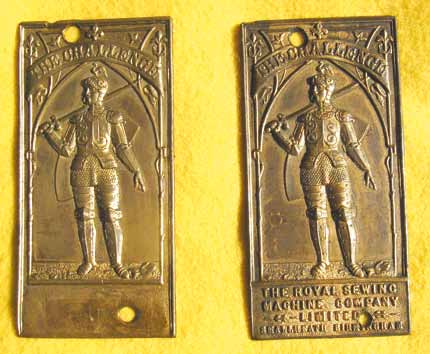
The brass front plates of the Royal S. M. Co. Ltd. and the Imperial S. M. Co. versions
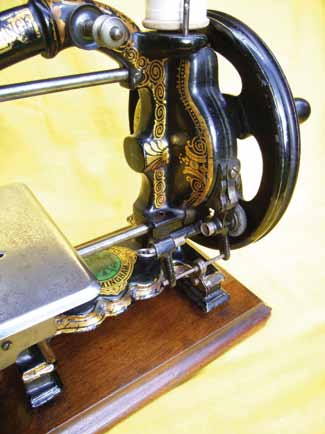
Illston's patent bobbin winder and the larger balance wheel
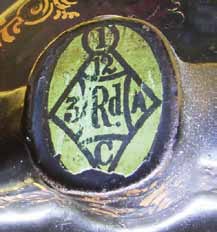
The Registration Mark on the Imperial "Challenge". There is a guide to dating these marks on page 16.
